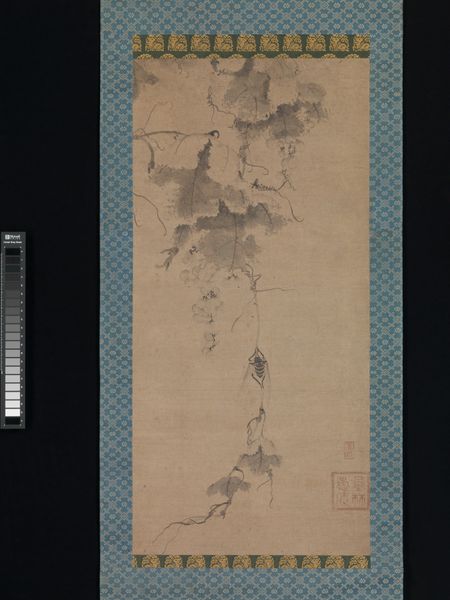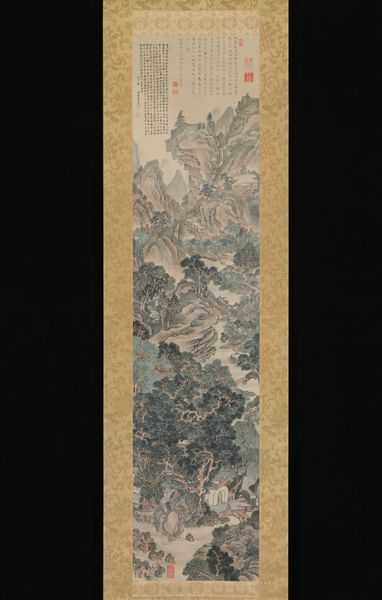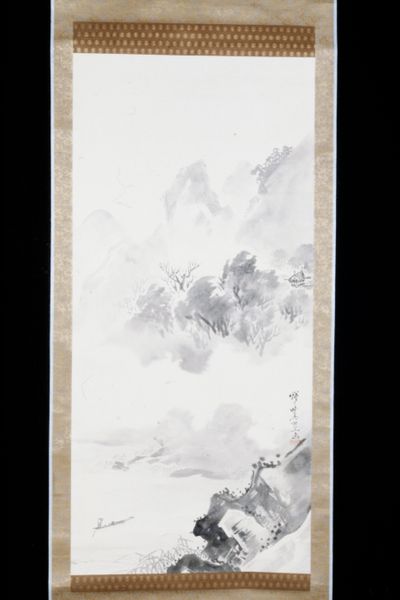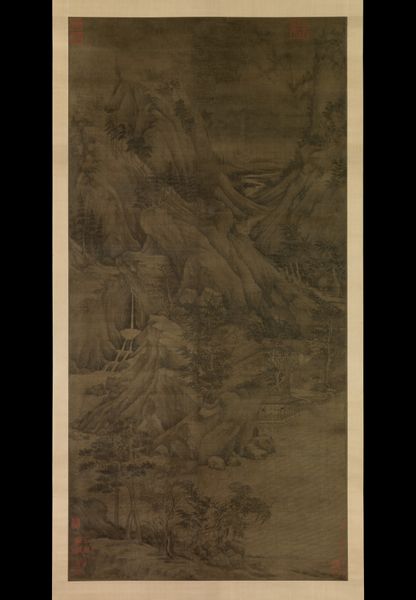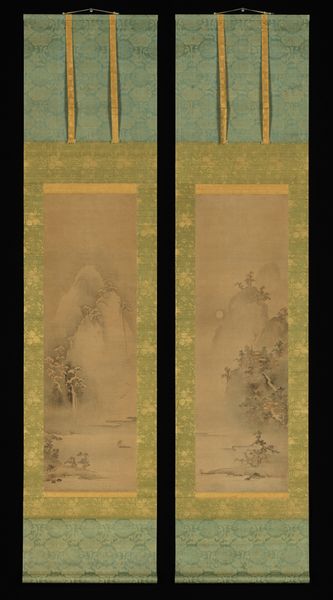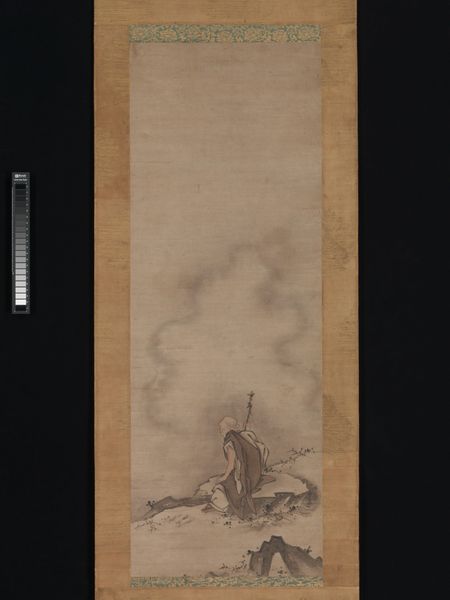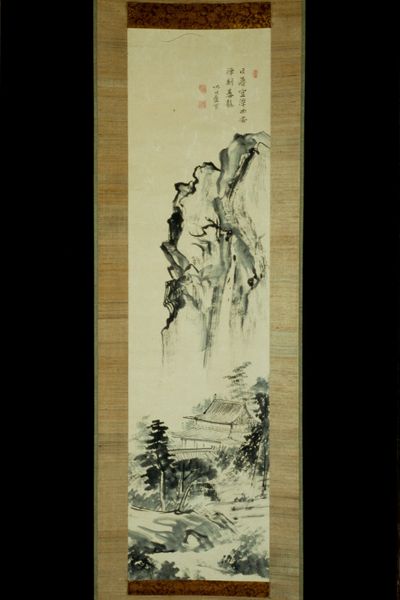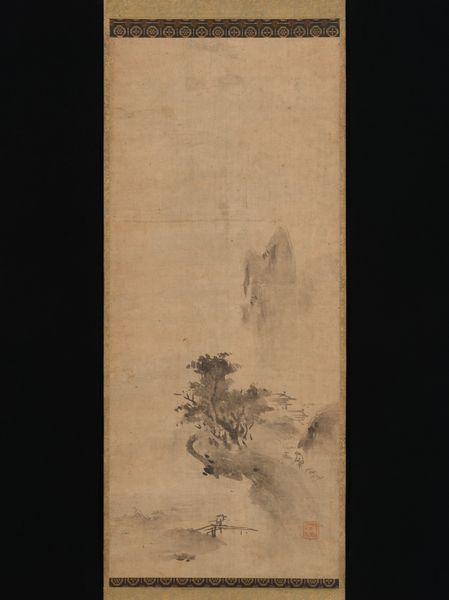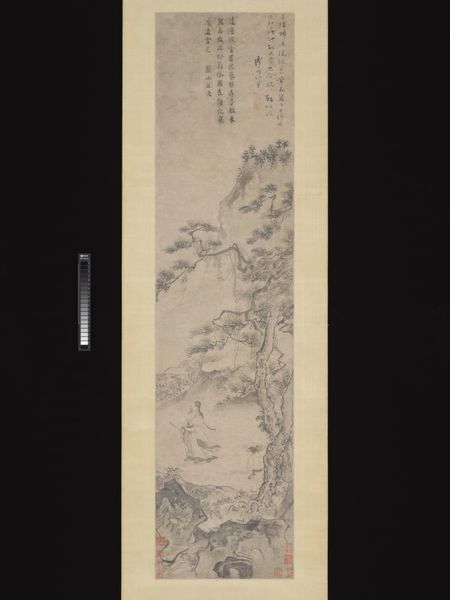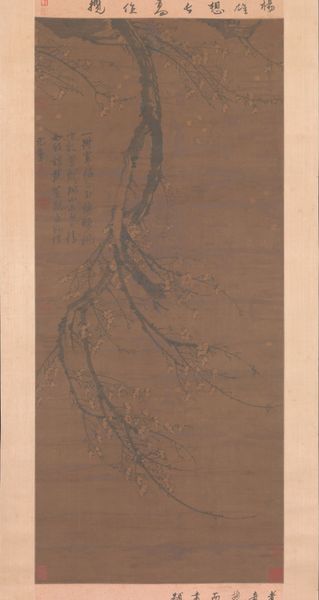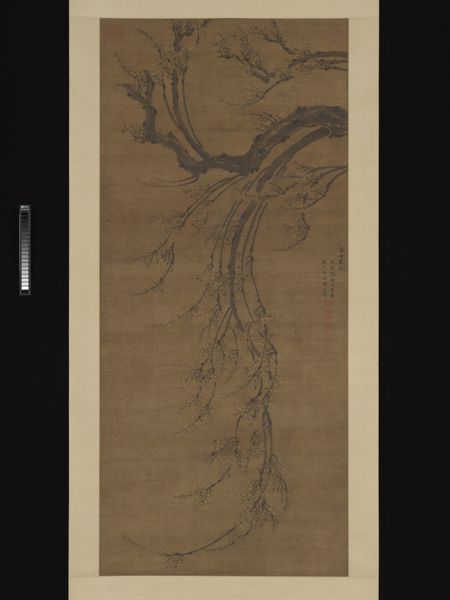
tempera, painting, paper, ink
#
tempera
#
painting
#
asian-art
#
landscape
#
ukiyo-e
#
paper
#
ink
#
calligraphy
#
monochrome
Dimensions: Image: 52 1/8 x 16 5/8 in. (132.4 x 42.2 cm) Overall with mounting: 85 13/16 × 23 3/8 in. (218 × 59.3 cm) Overall with knobs: 85 13/16 × 25 7/8 in. (218 × 65.8 cm)
Copyright: Public Domain
Curator: "Rainstorm over a River Village," painted between 1777 and 1835 by Tanomura Chikuden, depicts a landscape rendered in ink and tempera on paper. What strikes you first? Editor: It’s the pervasive atmosphere, really—the dampness seems to seep right off the scroll. The monochrome palette and vertical composition emphasize the sheer density of the rain. Curator: Absolutely. The monochrome reflects a significant philosophical and political stance during Chikuden’s life. He turned to painting and poetry after resisting service in the government, dominated by the Tokugawa shogunate. Monochrome landscapes became a form of subtle protest, rejecting the vibrant, colorful art associated with the ruling elite and reconnecting with earlier Chinese literati traditions of resistance. Editor: I see it in the execution. The gradations of ink create depth, while the stark contrast between the foreground trees and distant mountains throws off spatial balance, creating dynamic tension within the image. Note the delicate calligraphy too. Curator: The calligraphy certainly anchors the artwork. But I see it as more than a design element, it offers another layer of context. Calligraphy, along with the plum blossoms depicted throughout, functioned as codes—a form of communication for literati who sought solidarity outside mainstream channels of power. It was a powerful mode of identity. Editor: The structural composition leads your eye upwards; from the tiny boat on the river up through the foliage, to the bridge and further into the hazy mountains. Curator: And isn't that journey itself a reflection on the individual’s place within a larger social landscape? Consider, for instance, how Chikuden positions figures as almost imperceptible against the overwhelming backdrop of nature—highlighting both their vulnerability and the enduring spirit of resilience amid societal storms. Editor: A convergence of individual technique with social awareness—perhaps we both recognize what makes this piece resonate. Curator: Yes. By examining both form and context, we reveal something about art's complex dance with the world it both inhabits and resists.
Comments
No comments
Be the first to comment and join the conversation on the ultimate creative platform.
